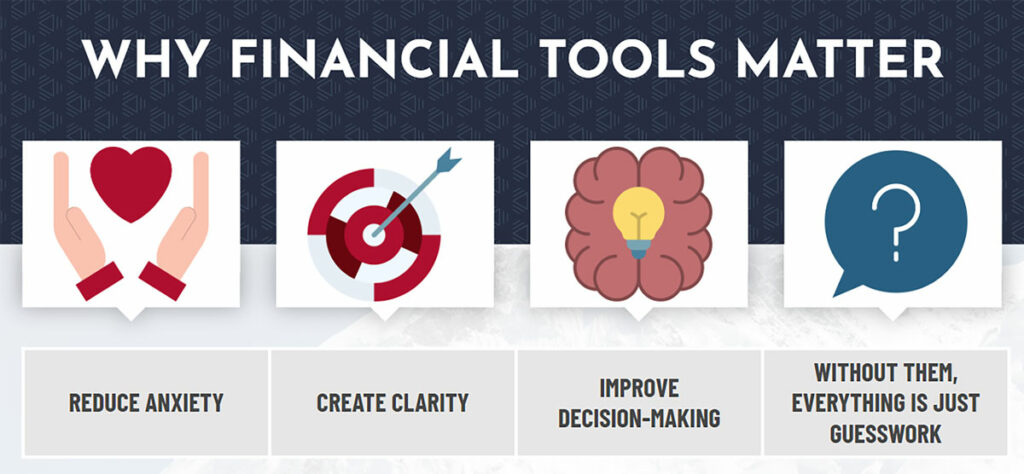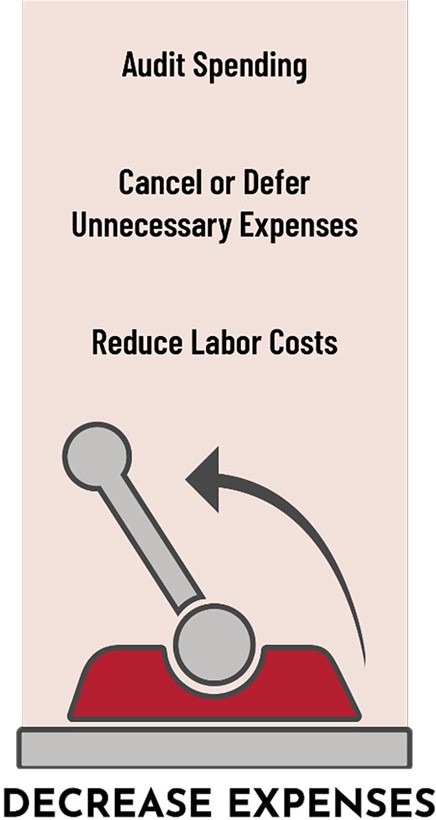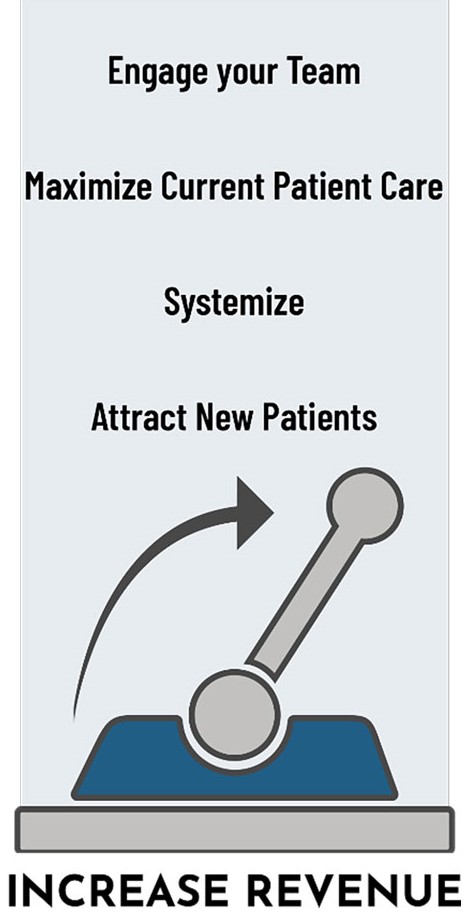Turn a downturn into your advantage by making the right moves now.
Editor’s note: The following content was drawn from an extensive six-part webinar series presented by Josey Sewell, Dr. Eric Roman, Ken Kaufman, and Emmet Scott. These industry leaders share their experiences, insights and best practices in handling a wide array of challenges that come during economic downturns.
Prices are rising across the nation and dentists have faced increasing costs for labor, overhead, and supplies within their practices. During a period of financial recession, patients have less money to spend, focus on their needs instead of wants, and put off making healthcare-related decisions. Unfortunately, for some patients, a recession can mean choosing certain needs over others, often delaying or forgoing dental care to save money.
A recession occurs when the gross domestic product (GDP) of a nation decreases for two consecutive quarters. The national economic state impacts dental practices, as a period of recession often leads to increased financial challenges for patients, dental leaders, and teams.
Financial hardship within a dental business can impact a practice’s case acceptance, limit patients’ financing options, and require patients to do more price shopping across dental offices than normal. Impacts also include limitations on growth capital for dental businesses and a dramatic change in consumer capital. It is also more likely that team members and patients have more difficulty within their personal lives than before because of national financial challenges.
It is important for dental practices to have systems in place to bounce back and thrive during periods of national economic hardship. Through operational systems, dental organizations can work efficiently under duress and learn how to navigate future challenges. Great things can happen under duress, and teams can learn the strategies and tools it takes to be successful in the industry.
By prioritizing personal health and wellness, team health, and financial tools, mitigating risk, integrating flexible staffing models, and utilizing levers of profitability, dental leaders can stay on top of their business’ operations and navigate a financial recession with confidence.
Prioritizing personal health and wellness
Times of recession can be stressful, time consuming, and overwhelming for a business. It can be easy for dental leaders to lose confidence and neglect their mental health while managing a company’s finances.
During times of challenge within a business, it is crucial for individual team members to maintain healthy routines. Leaders must especially prioritize their mental health, as they are the ones who will work through difficult challenges and guide teams to success.
The five indicators of health include physical, mental, spiritual, financial, and relational well-being. Physical well-being includes proper sleep, nutrition, physical movement, and exercise, regularly going to the doctor and prioritizing oneself. Mental health includes an individual’s mood, emotions, decision making capability, and the ability to have control over all of these together without making rash decisions.
Spiritual well-being includes an individual defining a clear purpose and intention of their work, and focusing on how and why they are committed to the company. Financial well-being goes beyond the money earned and into net worth, what profit goals the company is collectively moving toward, the next phase of planning, and debt management. Finally, relational health is maintaining relationships in an individual’s personal life and making time for people within the office and outside of the office. This can include being intentional with coworkers, making time for a spouse of friends, and putting time aside to hang out with kids.
The five “P’s” also guide an individual’s health and outline the critical components of our lives. Leaders must recharge their personal “battery” to guide teams within a business. Power is a combination of our physical and emotional well-being that allows individuals to be “full” and provide leadership and guidance to others. The second “P” is determining a personal purpose and ensuring that what is being done within a practice feels meaningful and impactful. The third “P” is people, which encompasses prioritizing important relationships. The fourth “P” is prosperity, which goes beyond money, into financial planning and defining the positive impact the business has within the community. The fifth “P” is performance. Team members and leaders need validation to feel as though their work is meaningful and impactful.
Taking care of personal health allows team members to maintain stability within the workplace. If a leader of a company is healthy and balanced, the business has more potential to survive during times of challenge. Leaders should prioritize personal time, walking or being outside, writing, meditation, breathing, date nights, family weekends, or whatever is personally fulfilling to them. Leaders must make sure they are emotionally and physically fed so they have the energy to provide for everyone else in the business.
Levers of profitability, increase revenue and decrease expenses
Levers of profitability are the fundamentals and basics of business finance that impact a business. Profitability levers increase a business’ revenue, decrease expenses, or combine both. Business leaders can work on increasing revenue by engaging team members, maximizing patient care, systemizing operations, and attracting new patients.
If a business has no profit margin, then there likely isn’t a focus on an overall mission. When a business has a higher profit margin, leaders can treat teams better, offer better benefits, do fun things for employees, invest in growth, and raise pay.
To increase revenue, leaders should focus on engaging their team members. To engage team members, leaders must connect with them in meaningful ways. Business leaders should have a system in place to measure employee’s alignment to the company’s vision and values. They should also coach team members within the business either up, in, or out, conduct quarterly check-ins, and measure key performance indicator data to ensure that patients are making follow-up appointments. This includes letting go of any disengaged team members, or team members who do just enough at work to not get fired.
To successfully get through a recession as a business, dental companies must set themselves apart. This could be through offering same-day dentistry, increasing case acceptance, systemizing team interactions with morning huddles, recapping the schedule, defining clear roles and responsibilities, and anticipating patient’s needs and making sure there enough appointments available.
Maintaining team health
Leaders must remain calm and collected during business challenges so they can lead teams with confidence during difficult times. During a recession, teams need clarity and direction, and they will look to the people in charge to know how to act. Leadership matters more during a recession to properly align teams, communicate transparently, make staffing decisions, build morale, and motivate people to do their best work.
Teams need clear and honest communication. Ideally, dental teams should be receiving communication from leaders weekly. Communication includes short descriptions of how the company is performing, what everyone is currently working on, and how goals have been met. This can be done over a communication platform, a group social media page, or a short video emailed to staff.
Teams also need positivity and hope to be communicated from leaders. Teams should be able to identify with a future in the business and have confidence instilled in them that the company will get through hardship.
Leaders must be transparent with employees, which includes being vulnerable, candid, and authentic. Leadership should reiterate to team members that they are important within the company, and that business could not get done without them, and empower them to make good decisions and step up.
Leadership matters in challenging times more than ever because insufficient leadership during uncertainty can lead to high turnover, unhealthy competition, decreased motivation, decreased productivity, and ultimately a negative patient experience.
Mitigate risk without freezing in fear
Risk for a business occurs anytime that there is uncertainty. The concept of risk has varying degrees, as some business decisions are riskier than others.
For dental practices, risk can include cash flow issues, bad strategic decisions, owner limitations, and labor costs including paying hygiene, front of office staff, and corporate employees.
A strategy to navigate risk during a recession is to consistently remind patients that dental care is a necessity. Everyone still needs dental care despite the state of the economy, and there will always be a need for emergency dental procedures and routine hygiene appointments.
Risk mitigation tools can help businesses think about, assess, and understand risk in a business. If risk is fully understood for a business, leaders can ensure team members are working in the right direction toward goals.
Flexible staffing models
Dental companies should maintain the correct number of employees to make sure that the business is operating efficiently, referred to as flexible staffing models. Employing the ideal number of staff ensures that cost needs are being met.
Reducing the size of a team can be daunting, but it is important to remember that interpersonal relationships can continue even when a work relationship does not. When leaders are open and transparent with communication about layoffs, relationships can be maintained through mutual understanding and respect.
Right sizing is a part of growth, not a failure for a business. Flexible staffing is not firing one or two employees for performance-related issues, instead, it is necessary to implement when a business needs its revenue and expenses to match up to meet profit margins.
When implementing flexible staffing models, it is ideal for employee’s well-being to be certain about the requirements, size, and necessities of the business and to only conduct large-scale layoffs once. If a business does layoffs in waves, it creates uncertainty and anxiety for staff that are still employed.
Leaders should be thoughtful about how to communicate the need for layoffs. Leaders can be more generous with severance if they act decisively. Make sure consistent information is being communicated from leadership and be clear about what will happen within the business going forward.

Financial tools
Financial tools create clarity on a business’ financial state. Leaders can financially plan by outsourcing or hiring an in-house position to evaluate relevant expense and revenue data. Evaluating financial information allows leaders to understand what they are dealing with and inform their business decisions.
There are four essential tools for businesses to focus on when headed toward an economic recession. The first one is historical reporting, where a business must evaluate performance and measure financial indicators, such as a reduction in case acceptance, determine if the business is seeing production, revenue, or collections go down. Historical reporting includes the income statement, balance sheet, statement of cash flow, and monthly KPIs.
The second essential tool is forward-looking financial information. Dental practices should follow many forecasting models including a 90-day model and a 12-month forecast to evaluate the performance of the business over time. This process of reporting allows business owners to understand that even in a crisis, the cash flow has the potential to be solid going forward based on past performance indicators.
The third tool is OPEX and CAPEX, both finance acronyms used to identify operational expenses such as payroll, labs, supplies, doctor pay, standard rent, marketing costs; all of which show up on income statements.
Measuring the internal rate of return (IRR), or how much a company must spend until it is profitable and the return on investment (ROI) is the fourth tool. IRR and ROI are performance measures used to evaluate the profitability of an investment. These numbers help a business to plan in a controlled way.
A business is ready for the next financial step when it is experiencing increasing growth. Once the current trajectory of growth has been evaluated, financial guidance should be sought to assist the profit-based planning. By prioritizing financial systems, dental companies can navigate a national financial recession with confidence.







